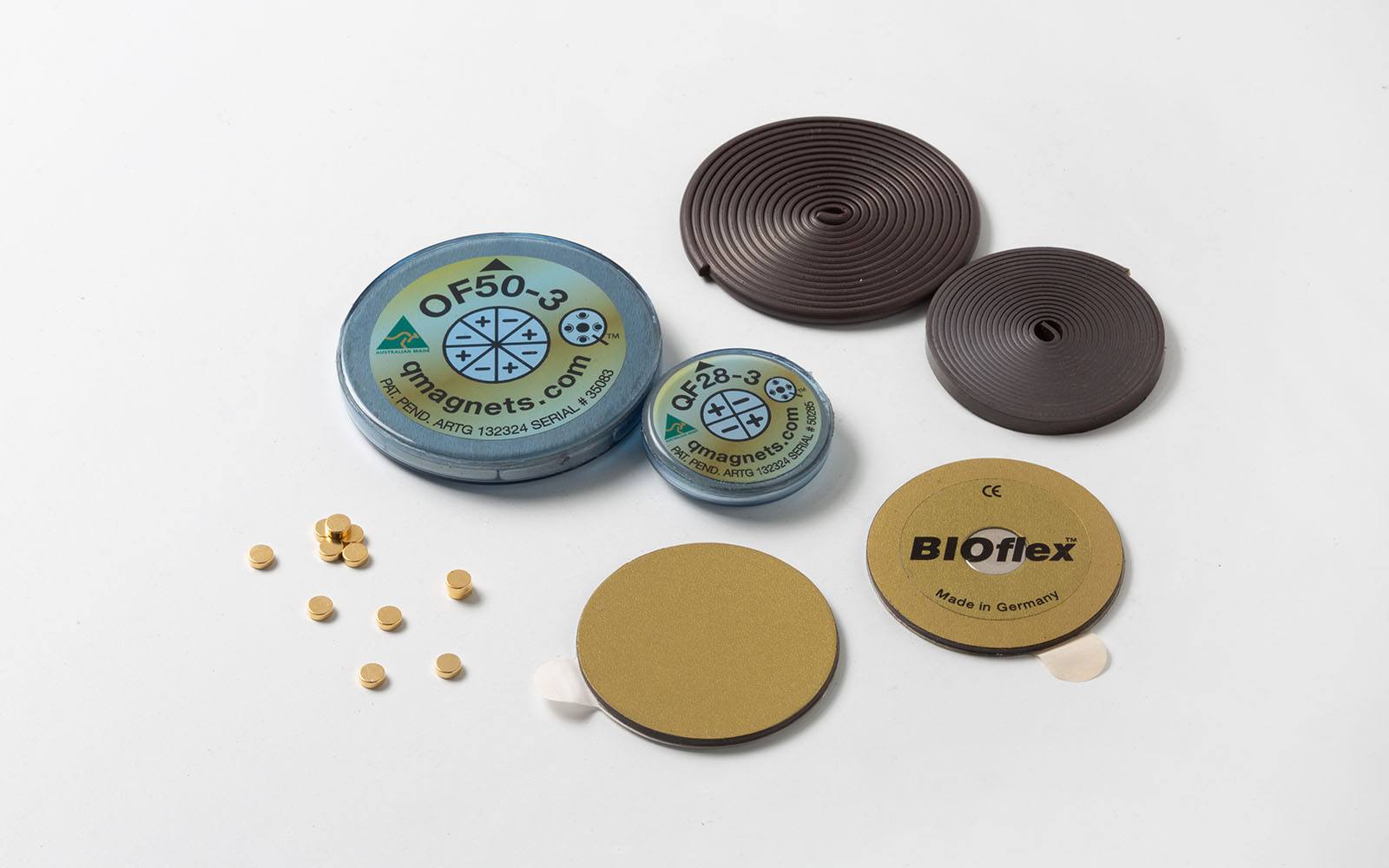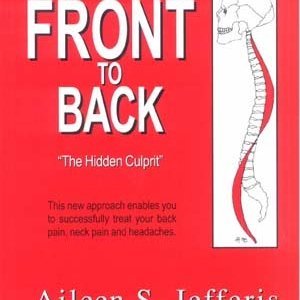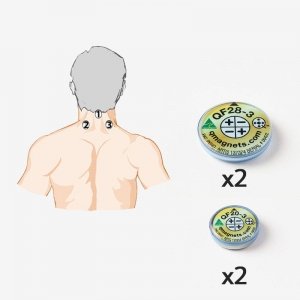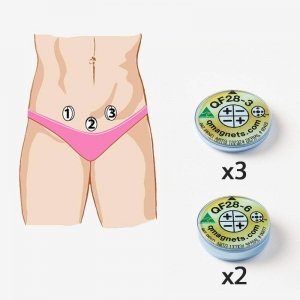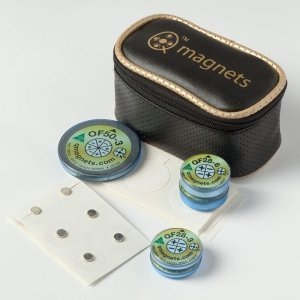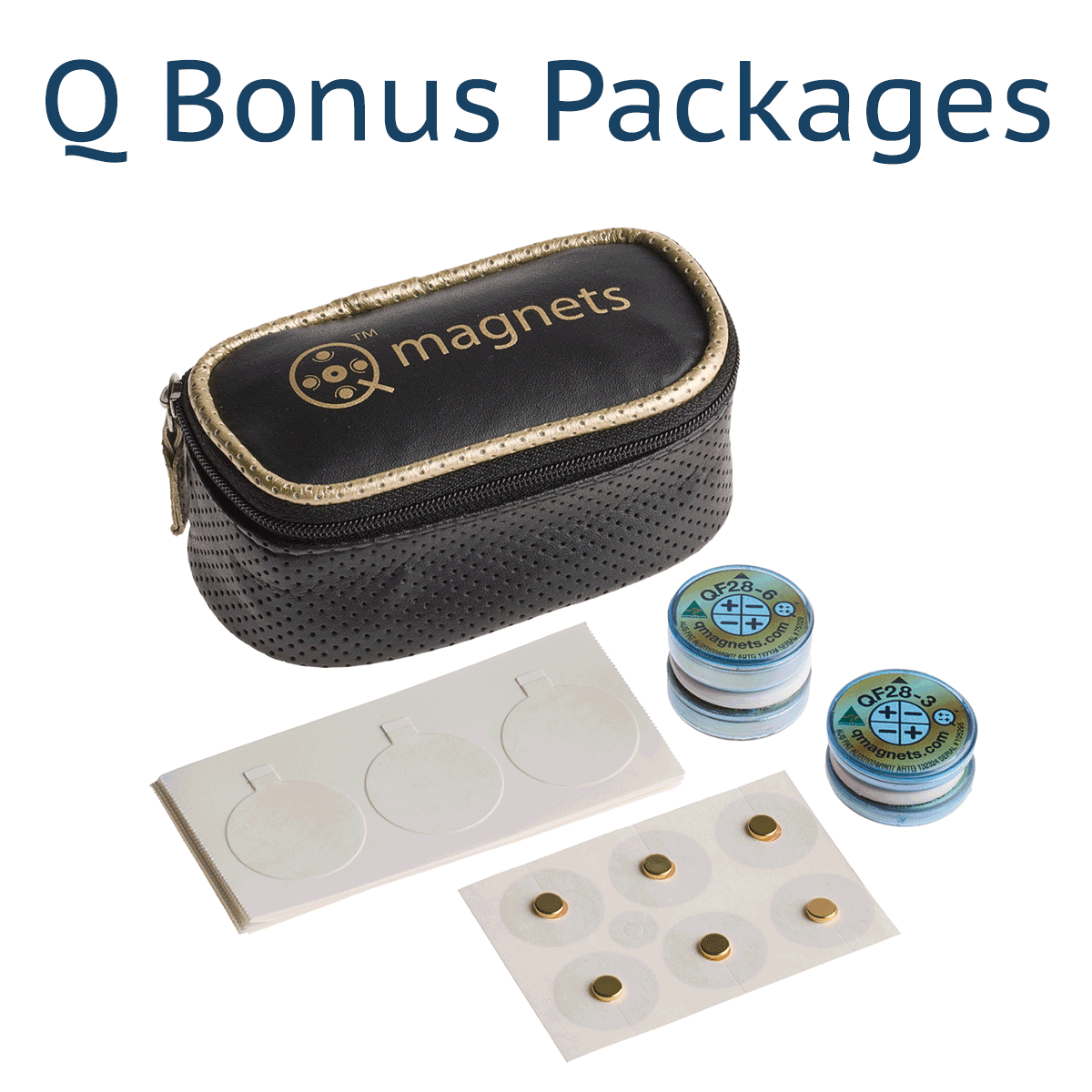Q Magnets offer four different types of multipolar magnets to choose from…
- Quadrapolar powerful neodymium magnet with flux plate – 4 alternating poles
- Hexapolar powerful neodymium magnet with flux plate – 6 alternating poles
- Octapolar powerful neodymium magnet with flux plate – 8 alternating poles
- Concentric weak flexible rubber magnet – circular alternating poles

What sets them apart from common bipolar magnets are the alternating pole boundaries that produce steep magnetic field gradients. This is where, the research suggests the main pain relieving and tissue healing properties of a static magnetic field resides.

The key is to place the right magnet over the specific part of the body so that the magnetic field envelopes the target tissue. For instance, for lower back pain, a lumbar spine placement will often require a larger and more powerful QF28-6 with a deeper penetration.
Whereas for superficial target areas like trigger points, the weaker flexible rubber magnets will still penetrate deep enough to be effective. The clinical trials for these types of magnets are quite impressive as well. CLICK HERE to learn more about the research on flexible rubber magnets.
The research clearly shows that Quadrapolar magnets have physiological effects that are not shared with your common bipolar magnets.

The active area of the magnet, or sweet spot is located at the boundary between the alternating poles, shown in red in the image below. Since magnetic field lines are invisible to the naked eye, this can be difficult to visualise. But sprinkling iron filings on the magnet gives a picture of the direction of the field lines as seen below. The iron filings follow the direction of the magnetic field lines between the poles shown by the red arrow.

Other research has confirmed that the point between the poles is where the magnetic field is most biologically active. The image below was taken from a study on myosin phosphorylation, which is an indicator of biological effects initiated by magnetic fields (see references at the bottom of this post).

Position A, at the boundary of the alternating poles was by far the most biologically active.
In other published research, this is called the maximally effective region (MER). The image below is from the research paper that describes the MER (see reference at the bottom of this post).

The table below details the differences in design, active areas and depth of penetration for the three different models: Quadrapolar, Hexapolar and Octapolar magnets.
So, it can be seen that the Quadrapolar magnet has 4 active areas, the Hexapolar 6 and the Octapolar 8 active areas.
So does more active areas equal better results?
Well, like most responses to questions about static magnets, the answer is; it depends. Because what you gain in active areas, you lose in depth of penetration as seen in the table above (the reason the Octapolar penetrates further than the Hexapolar is because its twice the size). Also, the Octapolar OF50-3 is 50mm or 2 inches in diameter which is great for the lower back or a large haematoma on the thigh, but it’s not going to be very practical for a small joint such as the elbow or a finger.
Choose Quadrapolar When:
Quadrapolar magnets are most effective when depth of penetration is most needed. Some areas for application would be:
- Lower back (although you would get better results with Octapolar OF50-3 when targeting two adjacent spinal levels)
- Hip joint
- Through a plaster cast
- Through a generous layer of adipose tissue
Choose Hexapolar When:
Conditions and placements where the Hexapolar magnets may be more effective are where the target tissue is more superficial. Examples such as…
- Elbow pain
- Minor plantar surface foot pain (heel pain)
- Wrist
- Ankle
- Minor shin pain
- Minor pain from carpel tunnel syndrome
Choose Octapolar When:
Our most advanced multipolar magnet, an Octapolar model, the OF50-3 should be used when you need to cover a large surface area such as a large haematoma or target two adjacent spinal levels such as L4/5 and L5/S1 as in this case study.
Choose Concentric Rings Magnets When:
Our Concentric Ring Magnets including the Bioflex range are a weaker flexible rubber magnet with a penetration of only 5-10mm and so work best when only a superficial field is required. Best used to target Myofacial trigger points.
Having the field penetrate deep enough is often critical to the success of the treatment, see this example of how Q Magnets penetrate for low back pain over the lumbar spine.
REFERENCES:
Engstrom, S., M. S. Markov, et al. (2002). “Effects of non-uniform static magnetic fields on the rate of myosin phosphorylation.” Bioelectromagnetics 23(6): 475-479. PMID 12210566; doi:10.1002/bem.10035
McLean, M., S. Engstrom, et al. (2001). “Static Magnetic Fields for the Treatment of Pain.” Epilepsy & Behavior 2(3): S74-S80 doi:10.1006/ebeh.2001.0211
McLean, M. J., R. R. Holcomb, et al. (1991). “Effects of Steady Magnetic Fields on Action Potentials of Sensory Neurons in Vitro.” Environmentalist 8(2). Click to download.
Vallbona C., Hazelwood C.F., et al. (1997). Response of pain to static magnetic fields in postpolio patients: a double-blind pilot study. Arch Phys Med Rehabil. 1997;78(11):1200-3. PMID: 9365349; doi.

